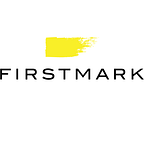The 5 Key Measurements of Product Success
One of the most important questions entrepreneurs should ask themselves is whether customers love their product. Yet as founders begin to scale their businesses, they too often fall into the trap of focusing on a single number: revenue.
“The problem with revenue as an indicator of product success is that by the time you’re losing it, it’s probably too late,” — Todd Olson, CEO of advanced analytics company Pendo.
Even those who look beyond revenue can still fall victim to measurement traps. There’s the issue of having too little data, like companies who only measure customer NPS. But too much data can also be a problem: with a sea of metrics and benchmarks to choose from it’s difficult to prioritize what matters.
Luckily Todd’s here to help. He founded Pendo to address the very challenge of measuring product experience. Todd recently outlined five simple measurements of product success at Data Driven NYC, a community for big data and AI enthusiasts organized by FirstMark.
Breadth of Use
The most intuitive measure of product success, this is simply a measurement of how many people are using your product. You can easily get these numbers by tracking visitors and account activity.
You should choose the most meaningful indicator of breadth for your business — whether total users, total active users, or total active accounts. Be thoughtful about your metric targets and set attainable goals for your team.
For Pendo, success means having more than 5 active users for a given customer within the last 30 days:
Frequency of Use
If a user isn’t logging into your product, it will be hard to retain them. “At the end of the day if a customer isn’t coming to my product at least once a month, that’s bad,” Todd cautions.
To understand frequency, measure things like login frequency or session length.
How frequently you want users returning depends on the purpose of your product, but usually more frequent is better. Pendo aims for more than 10 logins per user within 30 days:
If your login frequency is low, there isn’t a one-size-fits-all solution. The key, says Todd, is understanding user segments.
Examine your different types of users and the dynamics of who should be using your product, how often and for what reasons. For example, new customers could have extremely different behavior than existing customers. Breaking all your users into segments helps you gain a more intelligent view of whether you’re addressing their varied needs.
Depth of Use
Understanding how many of your product features are being used is key to measuring success. One of the simplest ways to determine Depth of Use is by measuring the percentage of your product features that are used regularly.
Start by identifying the top five features used by your core audience. These are the “value drivers” that keep people coming back to your product. Todd says ideally you want clients to be using all of those key features.
Understanding your product’s key features can also help you keep your product successful. For instance, if your product uses a freemium model, but you are giving away the most popular features, it could result in users downgrading to the free version.
Efficiency
Usability is key to retaining users and the ultimate goal of any product is the ability to use it easily, correctly and as quickly as possible.
Efficiency may be the most important measurement of success.
To measure efficiency, simply look for one or more key workflows in your product — anything from registration, to onboarding, to new feature activation — and measure how far users get in that workflow before dropping off. Establish meaningful completion goals for each workflow.
User frustration that results from getting stuck or being unable to figure out the product is a failure. If your product’s completion rate is low, ask: what’s the fastest way to deliver a key value and how can we make it better?
Satisfaction
What your customers are saying about your product is just as important as their user behavior.
At the end of the day, if a customer isn’t willing to recommend you, that isn’t success in the product world.
You can turn a qualitative reaction like satisfaction into an actionable quantitative measure by leveraging customer surveys.
Net Promoter Score (NPS) is widely used as an effective tool for measuring customer satisfaction. Todd recommends comparing your NPS against industry benchmarks offered by firms like Temkin.
Which of the above metrics are most salient will depend on your product. Todd advises: “It’s not that all five together are going to work for your product, but one or more of these five are likely leading indicators on whether your product is successful or not.”
To hear Todd’s final takeaway for every company examining their product metrics, watch his talk:
